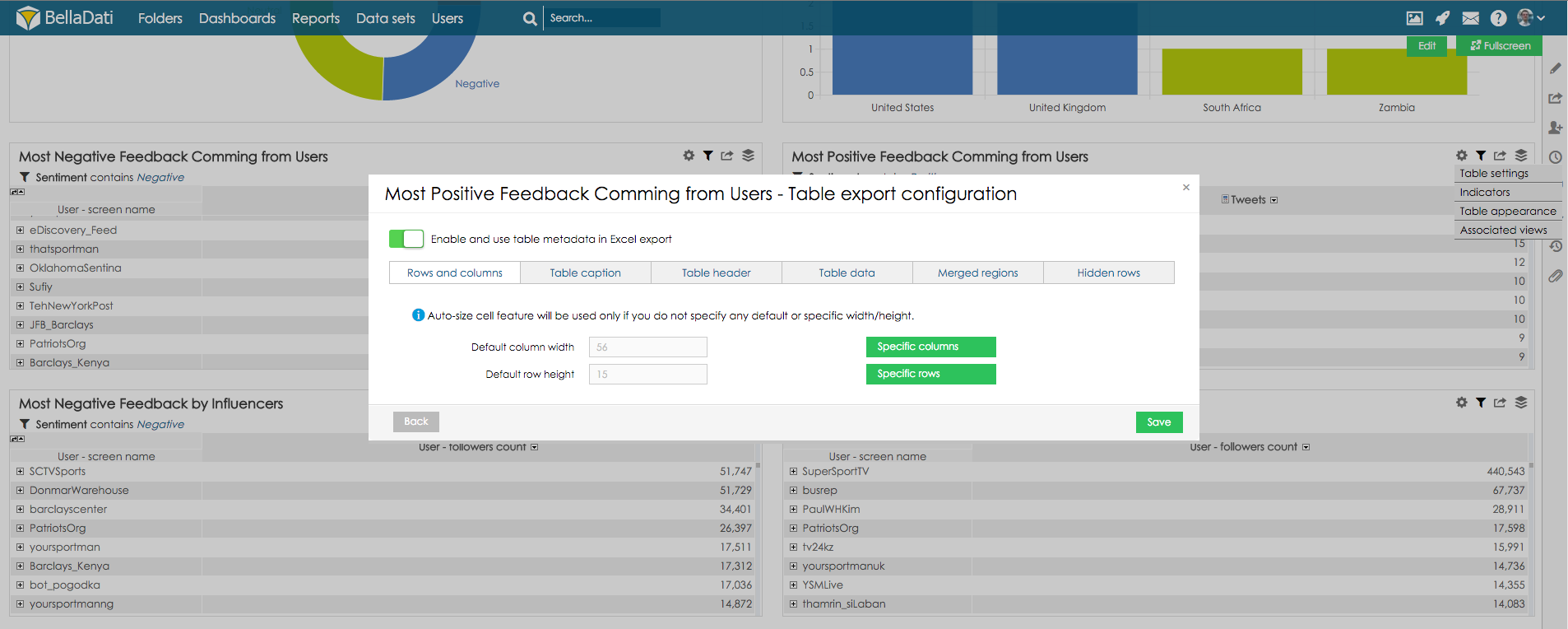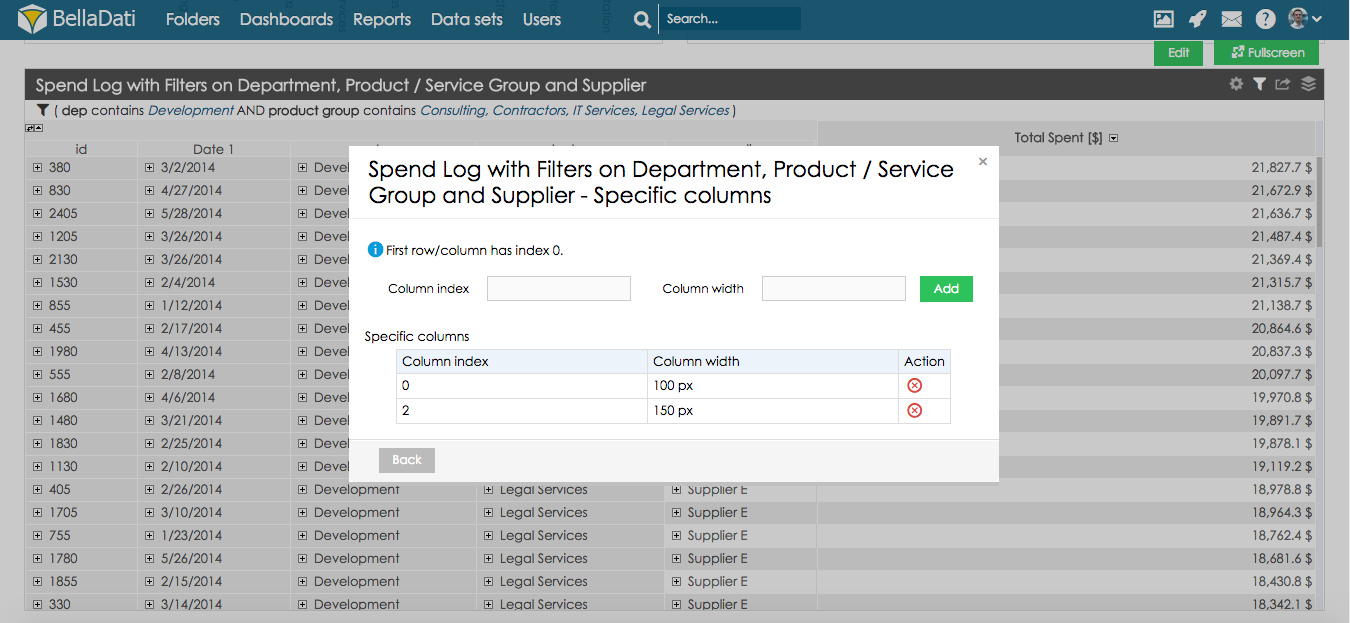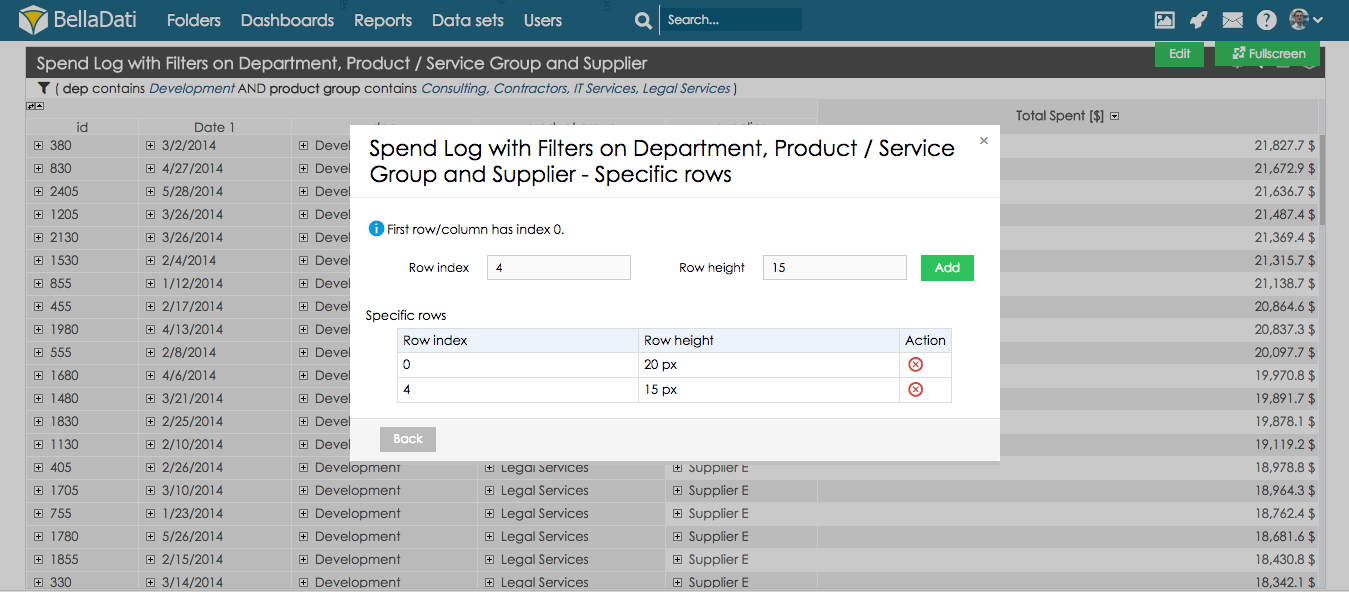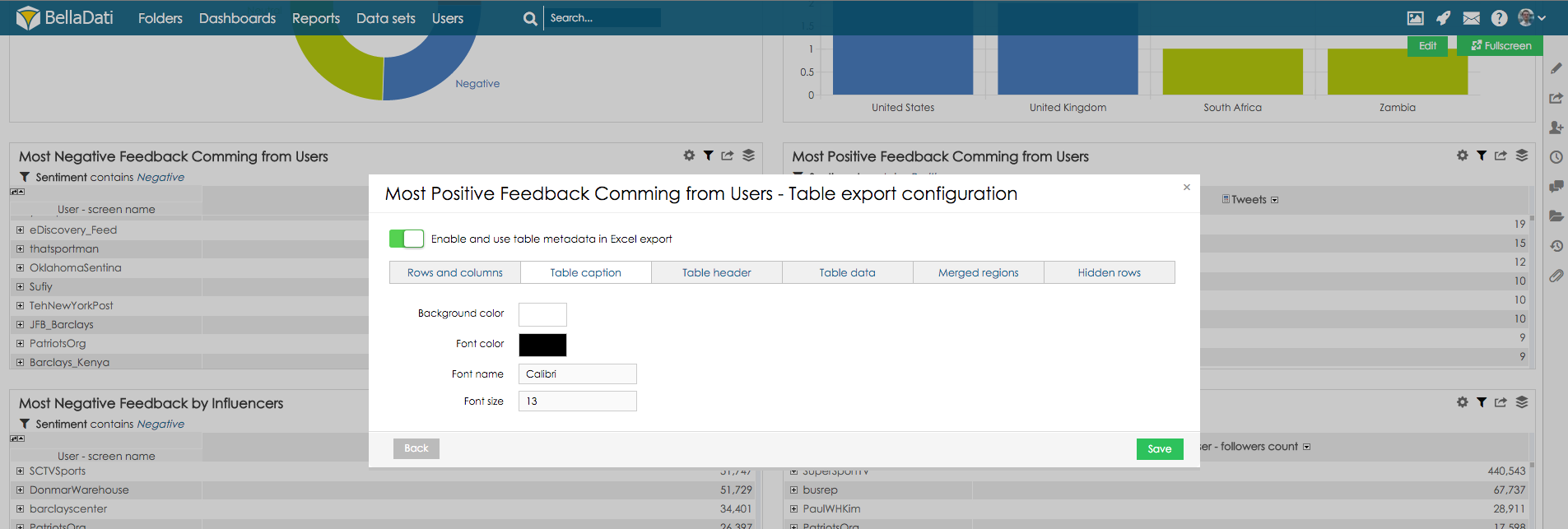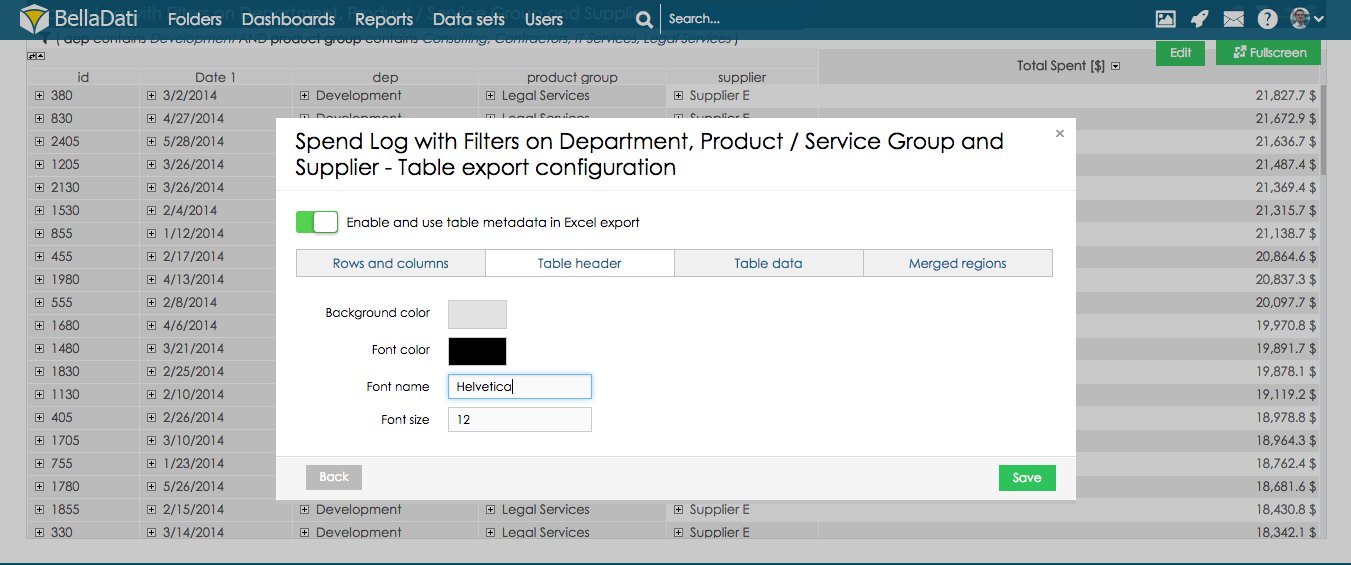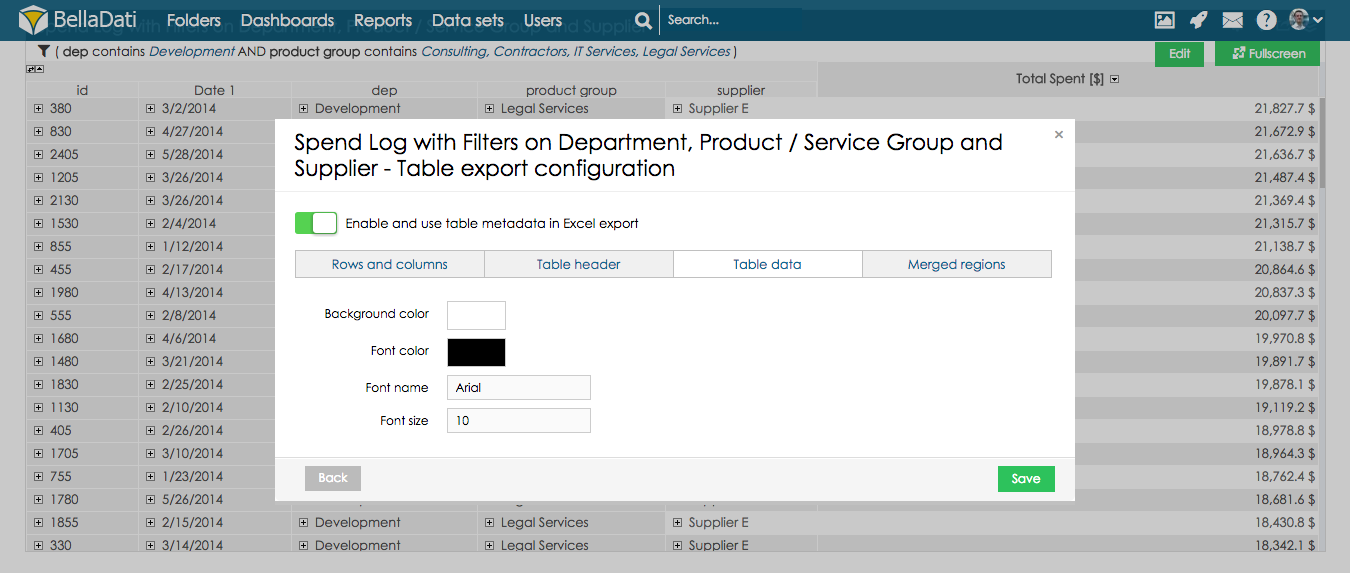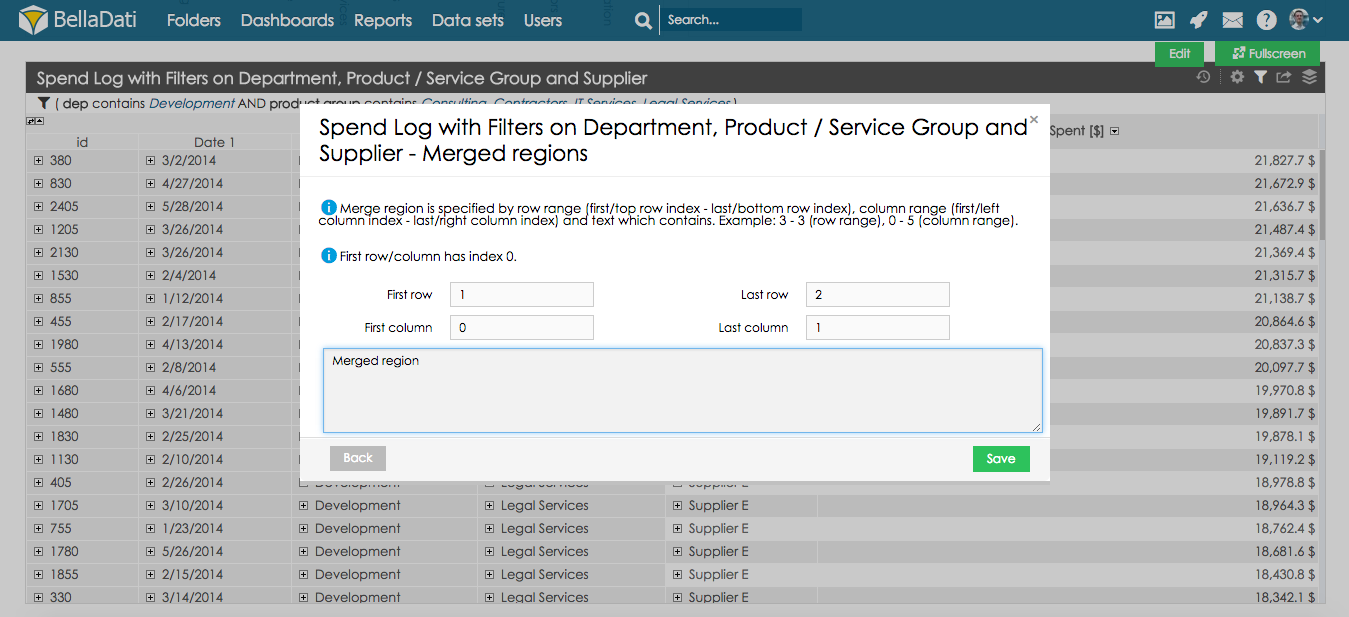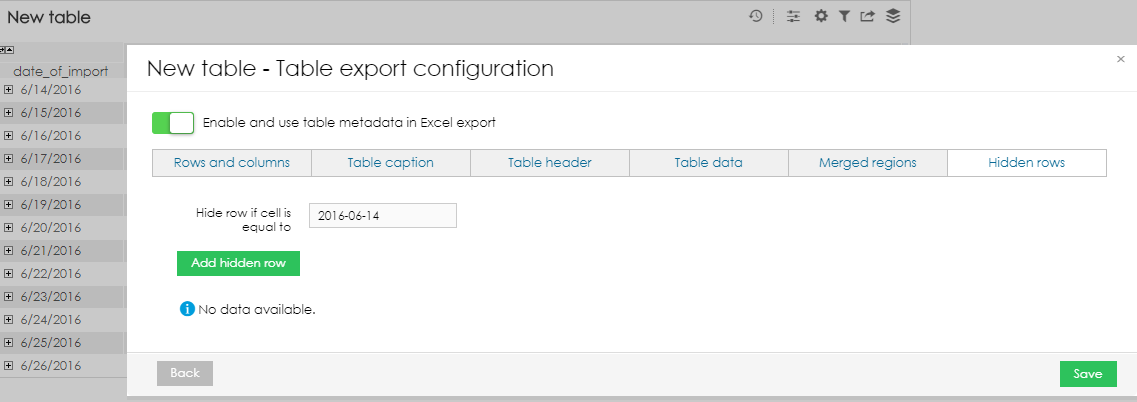Page History
| Sv translation | ||||
|---|---|---|---|---|
| ||||
Click on toolbox icon in table view and click button Table export configuration. In newly displayed dialogue window select option Enable and use table metadata in Excel export - when this option is selected, custom table export settings will be used. This dialogue window allows you to:
Setting column width and row height
Click on button Specific columns to set different column width for different columns. These columns are specified in the field Column index, which defines position of the column. First column has index 0. Example: First column should have column width set to 100px and third column will have column width set to 150px.
Click on button Specific rows to set different row height for different rows. These rows are specified in the field Row index, which defines position of the row. First row has index 0. Example: First row should have row height set to 20px and fifth column will have column width set to 15px.
Setting table caption formattingClick button Table header to set custom formatting of table header. This section allows you to:
Setting table header formattingClick button Table header to set custom formatting of table header. This section allows you to:
Setting table data formattingClick button Table data to set custom formatting of table data. This section allows you to:
Setting merged regionsThis section allows you to merge column and rows into one field and set custom content for this region. Click button Add merged region to open settings of merged region. Merged region is defined by row and column ranges. First row and first column always have index 0.
Example: For row number 2 and 3 and columns number 1 and 2 should be displayed with custom text "Merged region":
Settings Hidden RowsIt is possible to hide specific rows in the exported file. Users can specify a range of rows which will be hidden. Since BellaDati 2.9.4, it is also possible to hide all rows with a specific value.
|
| Sv translation | ||||
|---|---|---|---|---|
| ||||
テーブルビューの表ビューでツールボックスアイコンをクリックし、テーブル出力設定ボタンをクリックします。[表のエクスポート設定]ボタンをクリックします。 新しく表示されるダイアログウィンドウで、[Excelエクスポートでテーブルメタデータの使用を可能にする]オプションを選択します - このオプションを選択すると、カスタム表エクスポート設定が使用されます。新しく表示されたダイアログウィンドウで、Excel出力で表メタデータを有効化・使用オプションを選びます – オプション選択後、カスタムの表出力設定が使われます。 ダイアログウィンドウによりできることは:
列幅と行の高さの設定
特定の列ボタンをクリックし、異なる列に異なる列幅を設定します。これらの列は、列の位置を定義する列インデックス領域で特定されます。最初の列はインデックス()を持っています。 例: 最初の列は列幅100px、 3番目の列が列幅150px で設定されています。
特定の行ボタンをクリックし、異なる行に異なる高さを設定します。これらの行は、行の位置を定義する行インデックス領域で特定されます。最初の行はインデックス()を持っています。 例: 最初の行は高さ20px、 5番目の列が列幅15pxで設定されています。
表題形式の設定テーブルヘッダーボタンをクリックすることで、表ヘッダーのカスタム形式を設定できます。このセクションでできることは:
テーブルヘッダー形式の設定テーブルヘッダーボタンをクリックし、カスタムの表ヘッダー形式を設定します。このセクションでできることは:
テーブルデータ形式の設定テーブルデータボタンをクリックし、カスタムのテーブルデータ形式を設定します。このセクションでできることは:
併合リージョンの設定このセクションでは、列と行を1つの領域に併合 し、このリージョンに向けカスタム内容を設定できます。併合リージョンの追加ボタンをクリックし、併合リージョンの設定を開きます。 併合リージョンは行や列の範囲で定義されます。最初の行と列は必ずインデックス ()を持っています。
例: 行2と3 、列1と2はカスタムテキスト「併合リージョン」で 表示されなければいけません:
特定の列ボタンをクリックし、異なる列に異なる列幅を設定します。これらの列は、列の位置を定義する列インデックス領域で特定されます。最初の列はインデックス()を持っています。 |
...
